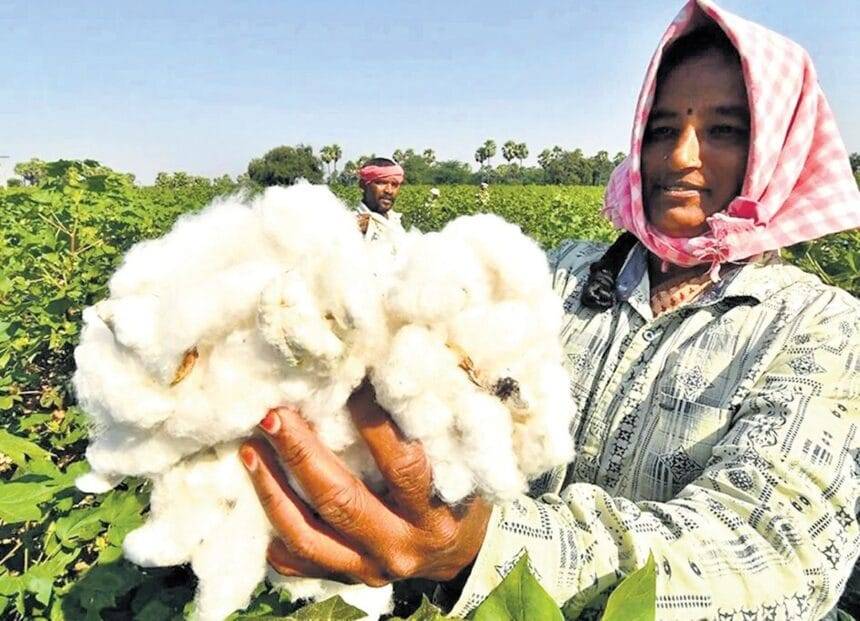Main Points In Hindi (मुख्य बातें – हिंदी में)
-
कम बाजार मूल्य: किसानों ने कपास बेचने से परहेज किया है क्योंकि वर्तमान में कपास का बाजार मूल्य बहुत कम है, जो कि 5000 से 6000 रुपये प्रति क्विंटल तक गिर गया है।
-
आपूर्ति और आयात का प्रभाव: किसानों और सीसीआई के पास पहले से ही कपास का बड़ा स्टॉक मौजूद है, और अगर सरकार आयात की अनुमति देती है, तो इससे घरेलू कपास बाजार ध्वस्त होगा और किसानों पर नकारात्मक प्रभाव पड़ेगा।
-
राजनीतिक महत्व: विदर्भ, मराठवाड़ा और उत्तरी महाराष्ट्र जैसे क्षेत्रों की कपास बेल्ट राजनीतिक रूप से महत्वपूर्ण है, जिसमें 288 सदस्यीय विधानसभा में 150 से अधिक विधायक शामिल हैं, और लोकसभा चुनावों में कपास जैसे कृषि मुद्दों ने बीजेपी को नुकसान पहुंचाया है।
-
उत्पादकता की उम्मीदें: किसान अपनी उपज के लिए अच्छे मूल्य की उम्मीद कर रहे हैं, क्योंकि उनकी इनपुट लागत बढ़ गई है, लेकिन कीमतें स्थिर बनी हैं, जिससे उनकी आर्थिक स्थिति संकट में आ सकती है।
- आत्महत्या का खतरा: किसान नेता विजय जावंडिया ने चेतावनी दी है कि यदि सरकार ने हस्तक्षेप नहीं किया, तो किसानों को आत्महत्या करने के लिए मजबूर होना पड़ सकता है।
Main Points In English(मुख्य बातें – अंग्रेज़ी में)
Here are 3 to 5 main points summarized in English from the provided text:
-
Low Market Prices: Farmers are refraining from selling their cotton due to low market prices, which not only affects their income but also accumulates stock with both farmers and the Cotton Corporation of India (CCI).
-
Impact of Importing Cotton: Patole warns that importing cotton, while there’s already a significant stock in the country, could devastate the domestic cotton market and primarily benefit traders at the farmers’ expense.
-
Political Importance of Cotton Regions: The cotton belts in Vidarbha, Marathwada, and northern Maharashtra are politically significant, contributing over 150 legislators in the 288-member assembly and influencing electoral outcomes, particularly during Lok Sabha elections.
-
Rising Input Costs vs. Stable Prices: Farmers expect better prices for their cotton due to increasing input costs, but prices have remained stagnant. Previously, cotton sold for 9,000 to 10,000 rupees per quintal, but it has dropped to between 5,000 and 6,000 rupees per quintal.
- Concern Over Farmer Suicides: Farmer leader Vijay Javadia expresses concern that if the government does not intervene to increase cotton prices, farmers may be driven to dire consequences, including suicides.


Complete News In Hindi(पूरी खबर – हिंदी में)
“कम बाजार मूल्य के कारण, किसानों ने अपना कपास बेचने से परहेज किया है। कपास का स्टॉक किसानों के साथ-साथ सीसीआई के पास भी है। पटोले ने कहा, जब देश में पहले से ही कपास का इतना बड़ा स्टॉक मौजूद है, तो आयात करने से घरेलू कपास बाजार ध्वस्त हो जाएगा और इससे किसानों पर काफी असर पड़ेगा, जबकि केवल व्यापारियों को फायदा होगा।
विदर्भ, मराठवाड़ा और उत्तरी महाराष्ट्र में राज्य की कपास बेल्ट शामिल है। ये क्षेत्र राजनीतिक रूप से महत्वपूर्ण हैं, 288 सदस्यीय विधानसभा में 150 से अधिक विधायक चुनते हैं। लोकसभा चुनाव में कपास, सोयाबीन और प्याज के मुद्दे पर बीजेपी को किरकिरी झेलनी पड़ी.
“कपास की फसल शुरू हो गई है और किसान अपनी उपज के लिए अच्छी कीमतों की उम्मीद कर रहे हैं। यह उचित भी है क्योंकि समय के साथ, इनपुट लागत काफी बढ़ गई है, लेकिन कीमतें स्थिर बनी हुई हैं, ”किसान नेता विजय जावंडिया ने कहा।
पहले कपास 9,000 रुपये से 10,000 रुपये प्रति क्विंटल बिकता था, लेकिन आज यह 5,000 रुपये से 6000 रुपये प्रति क्विंटल के बीच बिक रहा है। जावंदिया ने कहा, “अगर सरकार हस्तक्षेप नहीं करती है, तो किसान आत्महत्या के लिए मजबूर हो जाएंगे।”
Complete News In English(पूरी खबर – अंग्रेज़ी में)
Farmers are hesitant to sell their cotton because of low market prices. There is already a large stock of cotton with both farmers and the Cotton Corporation of India (CCI). Patole mentioned that if imports continue, it could destroy the domestic cotton market, negatively impacting farmers while only benefiting traders.
The cotton-producing regions include Vidarbha, Marathwada, and Northern Maharashtra, which are politically significant as they elect over 150 out of 288 members in the state assembly. In the Lok Sabha elections, the BJP faced criticism over issues related to cotton, soybean, and onions.
The cotton harvest has begun, and farmers are hoping for better prices. This expectation is reasonable since input costs have risen significantly, but prices remain unchanged, according to farmer leader Vijay Jawandia.


Previously, cotton was sold for 9,000 to 10,000 rupees per quintal, but the current price is between 5,000 and 6,000 rupees per quintal. Jawandia warned that if the government does not intervene, farmers may feel compelled to commit suicide.
Source link








